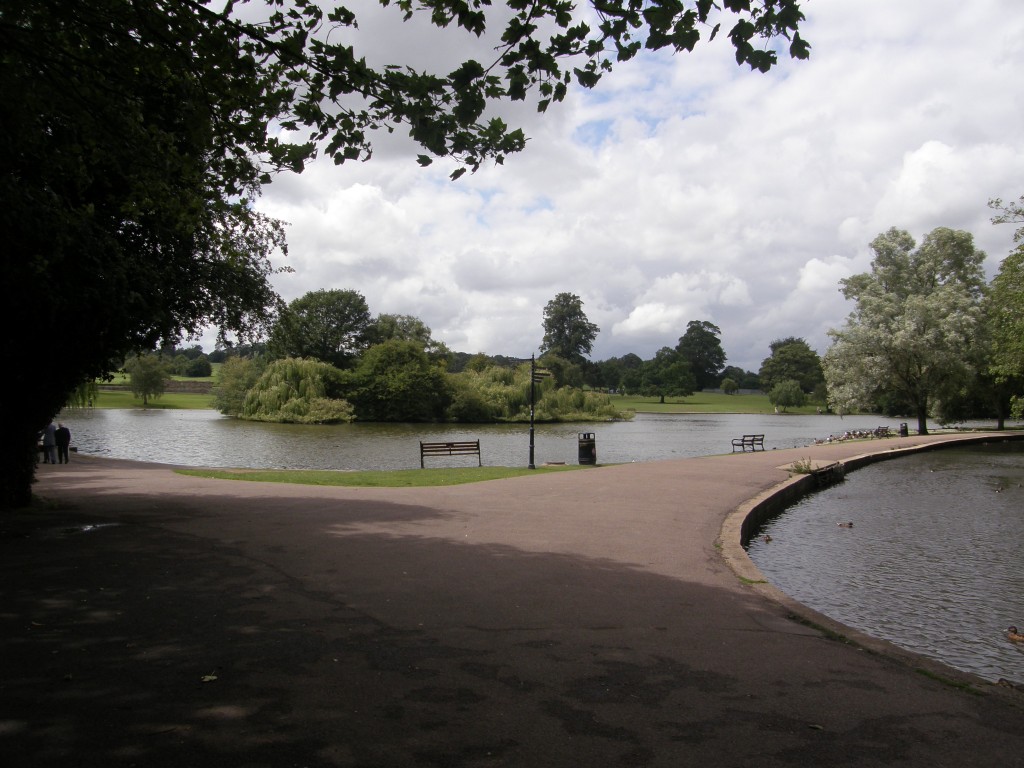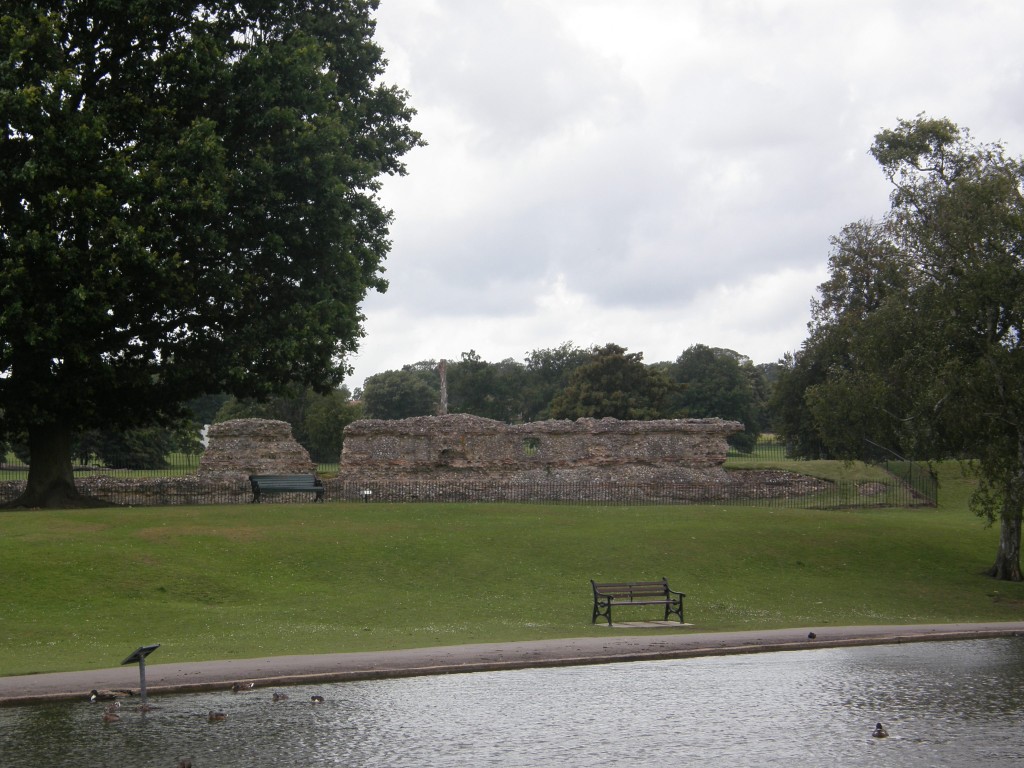The other cathedral church I visited on 8 July 2011 was that in the town of St. Albans. It might not actually be a town. British law makes distinctions between hamlets, villages, towns, and cities – and perhaps other urban designations (I don’t really know). There are also parishes (of two types, ecclesiastical and legal), boroughs, and counties. Each of these legal geographies has its own council or other form of government, and their interactions (amongst themselves and between them and the national government) are the stuff of much news commentary. In any event, there is a place called St. Albans and I’ll call it a town whether it legally is one or not.
St. Albans was founded by the Romans who called it Verulamium. The town now has a really lovely public park call Verulamium Park and parts of the old Roman town’s wall are on display there. There are also lovely rolling green hills, huge willows and other shade trees, and a delightful pond which is the home of swans, geese, and ducks who are regularly fed by the citizenry. Here are a couple of pictures of the park (including the wall):
The cathedral is dedicated to, and the town gets its current name from, St. Alban, first martyr of Britain. The story is that Alban was a pagan Roman soldier. According to James Kiefer’s hagiography, “he gave shelter to a Christian priest who was fleeing from arrest, and in the next few days the two talked at length, and Alban became a Christian. When officers came in search of the priest, Alban met them, dressed in the priest’s cloak, and they mistook him for the priest and arrested him. He refused to renounce his new faith, and was beheaded. He thus became the first Christian martyr in Britain. The second was the executioner who was to kill him, but who heard his testimony and was so impressed that he became a Christian on the spot, and refused to kill Alban. The third was the priest, who when he learned that Alban had been arrested in his place, hurried to the court in the hope of saving Alban by turning himself in. The place of their deaths is near the site of St. Alban’s Cathedral today.”
The shrine of St. Alban is inside the cathedral. It forms a separate chapel behind the “screen” or reredos behind the high altar (and before the Lady Chapel which takes up what an American church member would think of as the “chancel” area of the building). While I was photographing the shrine, one of the cathedral guides came up and engaged me in conversation. In the course of our discourse she said, “We have a bone you know?” – “I thought the saint’s whole body was here!” – “Oh, no! The bones were taken away when Henry the Eighth abolished the monasteries! Most of his bones were taken to the continent and an awful lot of them were taken to the cathedral in Cologne. A few years ago the Bishop of Cologne visited and he brought us a bone – Alban’s right shoulder bone! Of course, we’re Anglicans so we’re not much on relics … but we said, ‘Thank you very much’ and accepted his bone.” – “Oh… well, where is this bone?” – “It’s in a lovely box under the shroud on the shrine!” So here’s a picture of the shrine … under that red cover somewhere is a “lovely box” contained a shoulder bone, allegedly Alban’s…..
The reason I visited this particular place, other than it’s Roman history connection (there’s no Celtic connection that I know of), is that I was ordained on the feast of St. Alban (well… the eve, actually, but we used the Propers for St. Alban’s feast), so I consider him the patron of my priesthood.








Beautiful cathedral. Thank you for all your photo taking. Enjoying the journey